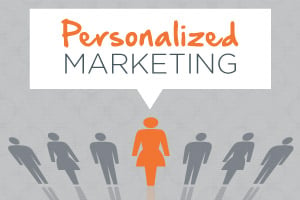 Before the rise of inbound marketing, traditional marketers often focused on broadcasting their messages to as wide of an audience as possible. Their tactics were expensive, interruptive, and, perhaps most egregiously, untargeted.
Before the rise of inbound marketing, traditional marketers often focused on broadcasting their messages to as wide of an audience as possible. Their tactics were expensive, interruptive, and, perhaps most egregiously, untargeted.
This antiquated, one-size-fits-all approach to marketing didn’t take into account who the target audience actually was. People weren’t seen as individuals — individuals with varying backgrounds, interests, and concerns. Instead, they were seen (and marketed to) as a single, homogeneous mass of potential customers.
Personalization to the Rescue
Personalization technology allows us to treat the people we’re marketing to more like individuals. The goal of personalization isn’t to engage with one audience of many, but to engage with infinite audiences of one.

Whether they’re visiting your website or receiving one of your emails, people want to see information that is relevant to them. According to a study from Janrain, nearly three-fourths (74%) of online consumers get frustrated with websites when the content has nothing to do with their interests.
With personalization, marketers can provide relevant, highly targeted content based on a variety of criteria, including a person’s location and the device a person is using, whether a person is an anonymous visitor, a lead who is already in your contacts database, or an existing customer.
In our new guide, How to Master Personalized Marketing: A Guide to Engaging Audiences of One, we’ll show you how you can leverage personalization technology at every stage of the inbound methodology, from attracting visitors, to converting visitors into leads, to closing leads into customers, to delighting your customers so they become promoters of your business.
Have any marketing personalization tips or tricks you’d like to share? Leave a comment below.
![]()



